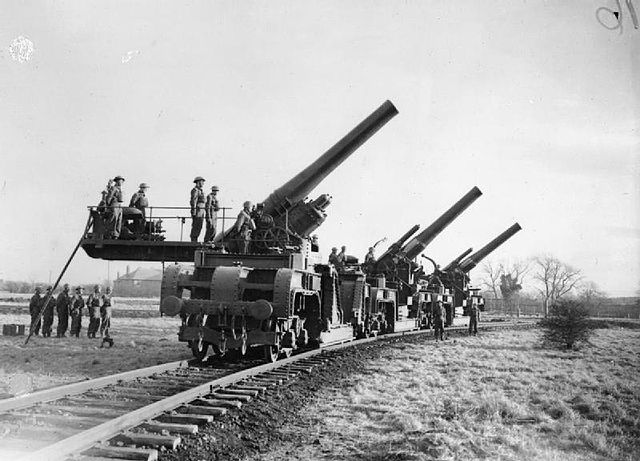14-inch M1920 railway gun
The 14-inch M1920 railway gun was the last model railway gun to be deployed by the United States Army. It was an upgrade of the US Navy 14"/50 caliber railway gun. Only four were deployed; two in the Harbor Defenses of Los Angeles and two in the Panama Canal Zone, where they could be shifted between the harbor defenses of Cristobal (Atlantic) or Balboa (Pacific).
Diagram showing gun barrel in elevated, normal and traveling positions
A M1920 on the test range.
A M1920 on the test range.
A group photo with a M1920.
A railway gun, also called a railroad gun, is a large artillery piece, often surplus naval artillery, mounted on, transported by, and fired from a specially designed railway wagon. Many countries have built railway guns, but the best-known are the large Krupp-built pieces used by Germany in World War I and World War II. Smaller guns were often part of an armoured train. Only able to be moved where there were good tracks, which could be destroyed by artillery bombardment or airstrike, railway guns were phased out after World War II.
French 370 mm railway howitzer of World War I
Non-traversing (top); car traversing mount (middle); top carriage traversing mount (bottom)
British 12-inch howitzers on top-carriage traversing mounts, traversed 90°, Catterick, December 1940
Cradle recoil (top); top carriage recoil (second); sliding recoil (third); rolling recoil (bottom)








